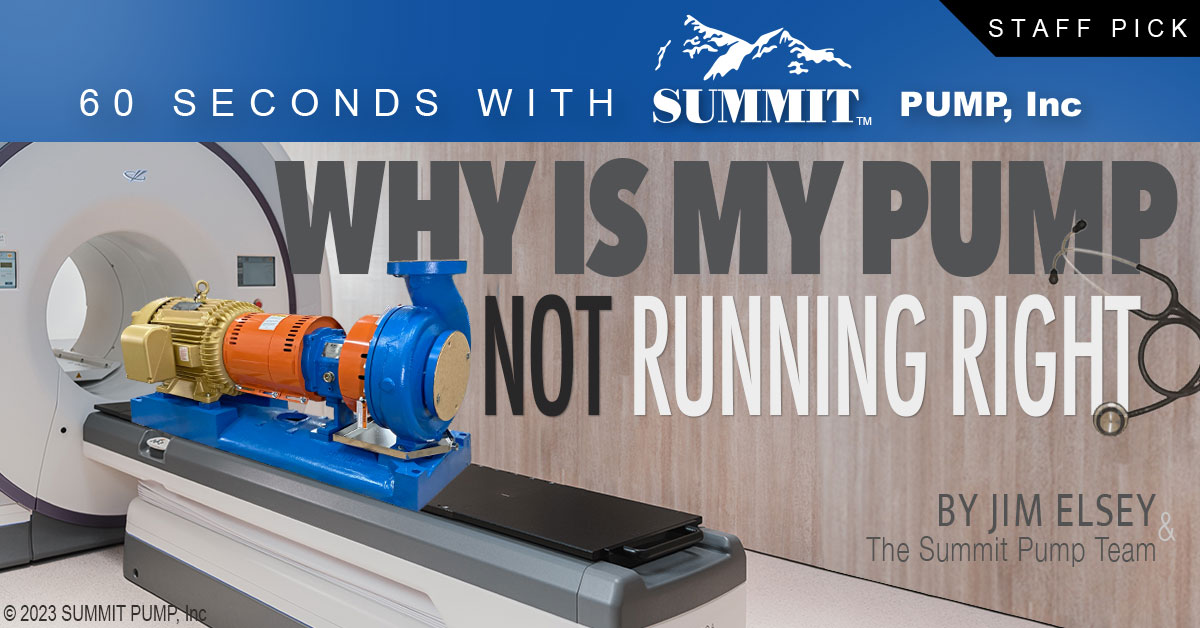What’s the Problem?We often get these calls from the field. While it is entirely possible, in reality, it is rarely the pump’s fault. From my almost fifty years of field experience with pump troubleshooting; I’ve found almost 80 percent of all centrifugal pump issues are on the suction side of the pump. I always start looking there first.
Where to Begin... Key Data and Considerations Prior to Calling Factory or RSM: - Pump serial number
- Fluid properties, or as I like to call it the “fluid personality”. (Temperature / Vapor Pressure / Specific Gravity / Viscosity / Suspended Solids / pH)
- What condition was the pump sized for? Flow and head (differential head)
- Impeller Clearance
- Shutoff pressure
- Duty Cycle
- NPSHa
- Submergence
- Is the pump suction condition in a lift or flooded situation?
- Perhaps supply a sketch or photos of the system showing pipe size, elevations and components. “A picture is worth a thousand words”
- New application or replacement? If it’s a replacement pump, ask why they are replacing it.
The above data should be fairly quick and easy to get from the customer with a Summit Pump Application Data Sheet. 
Sketch your pump's performance against the Summit Pump performance curve.
Further Investigation If you cannot solve the problem based on the above data, below are some more in-depth items to consider: - Confirm pump speed (RPM). This can be done with a tachometer. Be on the lookout for VFD issues, belt or engine driven installations.
- Confirm direction of rotation.
- Proper suction piping per ANSI/HI 9.6.6 guidelines. Proper pipe diameter, length and orientation is critical to successful pump/system operation
- Check the suction source. Is the tank too small, causing turbulence and high velocity? Is there entrained air in the liquid? Is there proper submergence?
- Gauges. Are the proper gauges installed? Are they calibrated?
- Suction lift conditions. Is the lift too high? What is the vapor pressure? Air leaks?
- Head & NPSHa Calculations. Confirm the head & NPSHa calculations. What is the NPSH margin? If the calculations are incorrect, the pump could be incorrectly sized for the application.
- Confirm liquid properties. Is the given information actually the liquid they are pumping? Did the process liquid change? (Specific Gravity, Viscosity, Temperature, Vapor Pressure)
- Pipe Strain. Is the piping properly supported? If not, pipe strain will usually manifest as hot bearings and alignment related issues. Was it laser-aligned?
- Parallel or Series Pumping. If not installed/operated correctly, pumps operating in parallel or series can have problems, and the pump(s) might not perform correctly.

Next Steps If you don’t know how to investigate these issues, and/or you are simply not comfortable with the process, we can assist, but please know that we are not system designers. We fully understand that when the pump is misbehaving and cranky the customer is pointing at you and directing unpleasant pressure to fix the issue immediately. Your best friends in this situation are pump/system knowledge, experience and the IOM; so we strongly recommend you (and your customer) read and understand the IOM before starting the pump. Last, but most assuredly not least, the Summit Pump staff are here to assist.


| 
